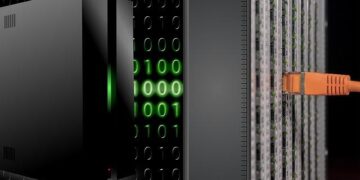China has unveiled the world’s first robot capable of running autonomously around the clock, a groundbreaking advancement in robotics technology. In newly released footage, the robot demonstrates an eerie ability to change its own batteries without human intervention, showcasing a level of self-sufficiency unprecedented in automated machines. This development marks a significant leap forward in continuous, maintenance-free operation, with potential applications spanning from industrial work to exploration in remote environments.
China Unveils Autonomous Running Robot Capable of Continuous Operation
In a groundbreaking technological achievement, Chinese engineers have developed a fully autonomous running robot designed for continuous operation without human intervention. The machine boasts the ability to run tirelessly, day and night, and showcases an advanced self-maintenance feature – it can change its own batteries on the go. This unprecedented capability not only extends the robot’s operational lifespan but also sets a new benchmark for endurance and autonomy in robotics, hinting at a future where machines maintain themselves in real-time environments.
Some standout features of this revolutionary robot include:
- 24/7 Running Capability: Powered by cutting-edge algorithms and efficient energy management, it can maintain continuous movement indefinitely.
- Self-Battery Replacement: Equipped with a precise robotic arm and charging dock, the robot autonomously swaps its battery packs, ensuring uninterrupted function.
- Robust Durability: Engineered to withstand various terrains and weather conditions, enhancing its potential applications in logistics, surveillance, and more.
| Specification | Detail |
|---|---|
| Top Speed | 15 km/h |
| Battery Swap Time | 30 seconds |
| Operational Duration | Unlimited (with swaps) |
| Payload Capacity | 5 kg |
Inside the Innovative Battery Self-Replacement System Revolutionizing Robotics
At the heart of this groundbreaking robot lies a battery self-replacement system that enables uninterrupted operation around the clock. Utilizing a combination of precision robotics and intelligent recognition software, the robot autonomously detects when its battery is nearing depletion, dock itself into a dedicated charging station, and performs a seamless battery swap without human intervention. This innovation not only amplifies operational efficiency but also significantly reduces downtime, paving the way for advanced robotic applications in environments demanding continuous performance such as manufacturing floors, warehouses, and security patrols.
The system’s architecture is a feat of engineering, combining mechanical dexterity with smart control algorithms. Key features include:
- Automated battery identification: Sensors accurately assess battery status in real time.
- Modular battery packs: Designed for swift detachment and reattachment.
- Self-docking mechanism: Ensures precise alignment during battery exchange.
- Safety protocols: Protect against overheating and mishandling during swaps.
| Component | Function | Benefit |
|---|---|---|
| Smart Sensor Array | Monitors battery charge and positioning | Accurate and timely battery swaps |
| Robotic Gripper | Manipulates battery modules with precision | Reliable and damage-free battery handling |
| Docking Station | Hosts batteries for charging and replacement | Efficient energy replenishment |
Expert Recommendations on Ethical Implications and Future Applications of Self-Maintaining Machines
Leading experts in robotics and AI ethics have raised critical concerns about the rapid deployment of self-maintaining machines, such as China’s newly unveiled 24/7 autonomous robot. While the innovation marks a milestone in robotic endurance and energy autonomy, questions linger around accountability should malfunctions or unintended consequences arise. Ethical considerations include:
- Ensuring transparency in machine decision-making processes
- Balancing automation with human oversight to prevent loss of control
- Addressing potential job displacement due to fully autonomous operations
- Developing fail-safe mechanisms to halt operations during system anomalies
Looking forward, experts envision a broad spectrum of future applications where these robots could revolutionize industries ranging from hazardous environment exploration to continuous manufacturing lines. A comparative overview of projected capabilities versus current limitations is summarized below.
| Capability | Current Status | Future Potential |
|---|---|---|
| Battery Self-Replacement | Demonstrated in new prototype | Standard in all long-duration robots |
| 24/7 Operation | Proven in controlled settings | Widespread industrial deployment |
| Autonomous Decision-Making | Basic parameters pre-programmed | Adaptive learning with ethical constraints |
| Human Interaction | Minimal direct engagement | Collaborative robot ecosystems |
To Wrap It Up
As China unveils the world’s first robot capable of running autonomously around the clock and recharging itself without human intervention, the boundaries of robotics and artificial intelligence continue to expand. This breakthrough not only demonstrates significant advancements in machine endurance and self-maintenance but also raises new questions about the future role of autonomous systems in both industry and daily life. As the technology evolves, experts and observers alike will be watching closely to see how these innovations reshape the landscape of automation worldwide.































